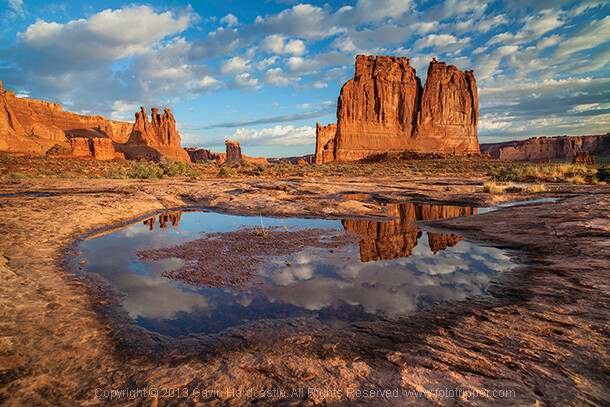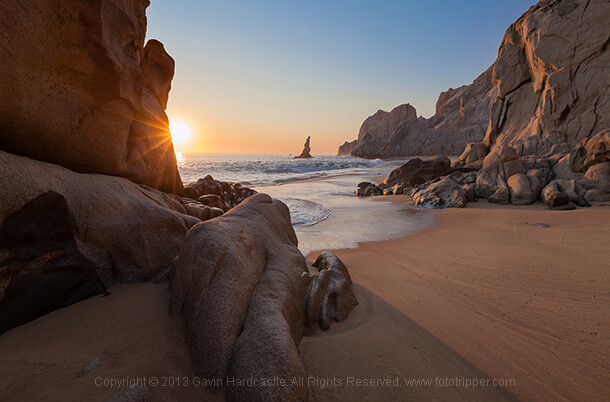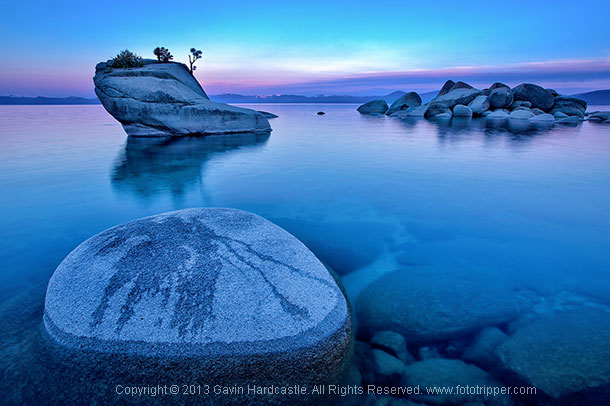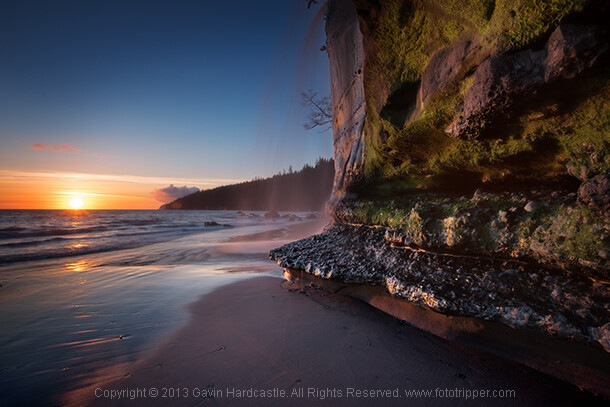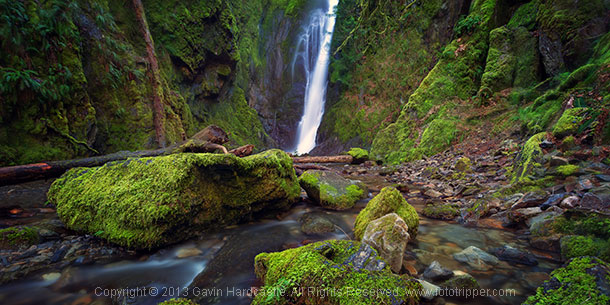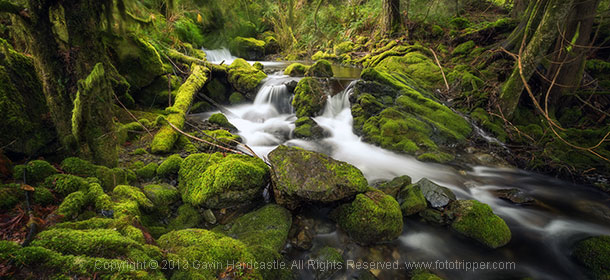The Twisted Sifter has one objective:
To educate, entertain, and inspire each and every day.
Three new posts daily. Sample the Picture of the Day to whet your appetite, or feast on the Best Of‘ if you’re hungry
Every Friday the Sifter publishes the Shirk Report. A weekly collection of the:
- 25 funniest images
- 10 most interesting articles
- 5 most entertaining videos
Jan 30, 2014
Picture of the Day: Reflection Perfection in Paris

REFLECTION PERFECTION IN PARIS Photograph by JOANNA LEMANSKA Website | Facebook | 500px | Twitter | Tumblr | Instagram In this beautiful black and white reflection photo by Joanna Lemanska aka MissCoolPics, we see the pedestrian underpass at Pont de la Tournelle, an arch bridge spanning the river Seine in Paris. According…
Read More »
Jan 29, 2014
Picture of the Day: NYC from the Top of the Rock
 SUNSET IN MANHATTAN Photograph by Örs Cseresnyés Website | Facebook | 500px | Prints available In this evening capture by Örs Cseresnyés, we see the Manhattan skyline as observed from the ‘Top of the Rock‘ observation deck at the Rockefeller Center’s GE Building (RCA Building). The Top of the Rock observation deck…
SUNSET IN MANHATTAN Photograph by Örs Cseresnyés Website | Facebook | 500px | Prints available In this evening capture by Örs Cseresnyés, we see the Manhattan skyline as observed from the ‘Top of the Rock‘ observation deck at the Rockefeller Center’s GE Building (RCA Building). The Top of the Rock observation deck…Read More »
Jan 27, 2014
Picture of the Day: Skogafoss, Iceland
 SKÓGAFOSS, ICELAND Photograph by STIAN KLO Facebook | Twitter | Instagram | 500px Skógafoss is one of the most famous (and visited) waterfalls in Iceland. Photographer Stian Klo (featured previously) says he had seen thousands of pictures from this iconic location and really wanted to try to get a ‘fresh’ angle of…
SKÓGAFOSS, ICELAND Photograph by STIAN KLO Facebook | Twitter | Instagram | 500px Skógafoss is one of the most famous (and visited) waterfalls in Iceland. Photographer Stian Klo (featured previously) says he had seen thousands of pictures from this iconic location and really wanted to try to get a ‘fresh’ angle of…Read More »
Jan 26, 2014
Picture of the Day: Lake Superior’s Fortress of Solitude
 LAKE SUPERIOR’S FORTRESS OF SOLITUDE Photograph via Dirtyflowerz on reddit In this amazing capture we see the frozen shores of Lake Superior awash with giant chunks of ice that look eerily similar to Superman’s Fortress of Solitude. Unfortunately there is not much information available about the exact location this picture was taken…
LAKE SUPERIOR’S FORTRESS OF SOLITUDE Photograph via Dirtyflowerz on reddit In this amazing capture we see the frozen shores of Lake Superior awash with giant chunks of ice that look eerily similar to Superman’s Fortress of Solitude. Unfortunately there is not much information available about the exact location this picture was taken…Read More »
Jan 24, 2014
Picture of the Day: This Lake is Pure Lava
 THIS LAKE IS PURE LAVA Photograph by Cai Tjeenk Willink In this amazing photo we see the lava lake at Mount Nyiragongo, an active stratovolcano inside Virunga National Park, in the Democratic Republic of the Congo. The volcano has erupted at least 34 times since 1882, creating various-sized lava lakes that have…
THIS LAKE IS PURE LAVA Photograph by Cai Tjeenk Willink In this amazing photo we see the lava lake at Mount Nyiragongo, an active stratovolcano inside Virunga National Park, in the Democratic Republic of the Congo. The volcano has erupted at least 34 times since 1882, creating various-sized lava lakes that have…Read More »
Jan 22, 2014
Picture of the Day: A Fox Says What?
 A FOX SAYS WHAT? Photograph by Gabriel Ciora-Márkus In this fantastic capture by Gabriel Ciora-Márkus, we get a candid close up of a fox in the mountains of Transylvania, Romania. I’m not 100% sure (maybe a Fox enthusiast can confirm?), but I believe this is a red fox (Vulpes vulpes). The red…
A FOX SAYS WHAT? Photograph by Gabriel Ciora-Márkus In this fantastic capture by Gabriel Ciora-Márkus, we get a candid close up of a fox in the mountains of Transylvania, Romania. I’m not 100% sure (maybe a Fox enthusiast can confirm?), but I believe this is a red fox (Vulpes vulpes). The red…Read More »
Jan 21, 2014
Picture of the Day: Looking Up to Giant Sequoias
 LOOKING UP TO GIANT SEQUOIAS Photograph by xeno_sapien on reddit In this breathtaking photograph by xeno_sapien on reddit, we look skyward, surrounded by giant sequoia trees. The photograph was taken at Sequoia National Park which is located in the United States in the southern Sierra Nevada east of Visalia, California. Established on…
LOOKING UP TO GIANT SEQUOIAS Photograph by xeno_sapien on reddit In this breathtaking photograph by xeno_sapien on reddit, we look skyward, surrounded by giant sequoia trees. The photograph was taken at Sequoia National Park which is located in the United States in the southern Sierra Nevada east of Visalia, California. Established on…Read More »
Jan 19, 2014
Picture of the Day: Split Apple Rock
 SPLIT APPLE ROCK Photograph by Rosino on Flickr Split Apple Rock is a geological rock formation in The Tasman Bay off the northern coast of the South Island of New Zealand. The rock, made of granite, looks like an apple split in half. The popular tourist attraction is located in the Tasman…
SPLIT APPLE ROCK Photograph by Rosino on Flickr Split Apple Rock is a geological rock formation in The Tasman Bay off the northern coast of the South Island of New Zealand. The rock, made of granite, looks like an apple split in half. The popular tourist attraction is located in the Tasman…Read More »
Jan 17, 2014
Picture of the Day: This Contact Lens Could Save Your Life
 THIS CONTACT LENS COULD SAVE YOUR LIFE Photograph by Google Google is well known their ambitious and audacious side projects and their latest idea is no different. Announced yesterday on their official Google blog, project co-founders Brian Otis and Babak Parviz unveiled an intriguing image of a contact lens with a tiny…
THIS CONTACT LENS COULD SAVE YOUR LIFE Photograph by Google Google is well known their ambitious and audacious side projects and their latest idea is no different. Announced yesterday on their official Google blog, project co-founders Brian Otis and Babak Parviz unveiled an intriguing image of a contact lens with a tiny…Read More »
Jan 14, 2014
Picture of the Day: The Standoff
 THE STANDOFF Photograph by ALESSANDRO CANCIAN Website | Facebook | Twitter | 500px In this fantastic close up by Alessandro Cancian, we see a chipmunk and bird facing off, both clearly interested in the food that is atop this post. In the photo description page on 500px, Cancian says he used a…
THE STANDOFF Photograph by ALESSANDRO CANCIAN Website | Facebook | Twitter | 500px In this fantastic close up by Alessandro Cancian, we see a chipmunk and bird facing off, both clearly interested in the food that is atop this post. In the photo description page on 500px, Cancian says he used a…Read More »
Jan 13, 2014
Picture of the Day: Little Lake of Reflection
 LITTLE LAKE OF REFLECTION Photograph by Gitta Sladič Lake Jasna is a picturesque alpine lake that covers a modest surface area of 2.2 ha (5.4 acres). What it lacks in size it makes up for in breathtaking surroundings. Located in northwestern Slovenia, Lake Jasna is 2 km from the small town of…
LITTLE LAKE OF REFLECTION Photograph by Gitta Sladič Lake Jasna is a picturesque alpine lake that covers a modest surface area of 2.2 ha (5.4 acres). What it lacks in size it makes up for in breathtaking surroundings. Located in northwestern Slovenia, Lake Jasna is 2 km from the small town of…Read More »
Jan 12, 2014
Picture of the Day: Freediving with Tunas
 FREEDIVING WITH TUNAS Photograph by KURT ARRIGO Website | Facebook | Twitter | Tumblr | 500px In this breathtaking underwater photograph by Kurt Arrigo, we see a woman freediving (i.e., no breathing aid) with a school of tuna fish. This is not a composite or digitally manipulated as many may be quick…
FREEDIVING WITH TUNAS Photograph by KURT ARRIGO Website | Facebook | Twitter | Tumblr | 500px In this breathtaking underwater photograph by Kurt Arrigo, we see a woman freediving (i.e., no breathing aid) with a school of tuna fish. This is not a composite or digitally manipulated as many may be quick…Read More »
Jan 10, 2014
Picture of the Day: The ‘Wind Chilled’ City
 THE ‘WIND CHILLED’ CITY Photograph by Hank Cain In this aerial photograph by pilot Hank Cain, we see the beautiful Chicago skyline below on a chilly morning on January 7, 2014. The photo was taken with Hank’s iPhone and the image has quickly spread online in the last few days. If you…
THE ‘WIND CHILLED’ CITY Photograph by Hank Cain In this aerial photograph by pilot Hank Cain, we see the beautiful Chicago skyline below on a chilly morning on January 7, 2014. The photo was taken with Hank’s iPhone and the image has quickly spread online in the last few days. If you…Read More »
Jan 9, 2014
Picture of the Day: Frigid Falls
 FRIGID FALLS Photograph by Shaheen Karolia In this beautiful capture we see the famous Niagara Falls on a frosty winter day. The photograph, by Shaheen Karolia, was taken on January 2nd, 2014. According to FriendlyForecast, the weather that day was between -10 and -15 degrees Celsius (14 – 5 degrees Fahrenheit). The…
FRIGID FALLS Photograph by Shaheen Karolia In this beautiful capture we see the famous Niagara Falls on a frosty winter day. The photograph, by Shaheen Karolia, was taken on January 2nd, 2014. According to FriendlyForecast, the weather that day was between -10 and -15 degrees Celsius (14 – 5 degrees Fahrenheit). The…Read More »
Jan 8, 2014
Picture of the Day: San Francisco Fogginess
 SAN FRANCISCO FOGGINESS Photograph by Michael Bennett In this beautiful sunrise capture, we see the Golden Gate Bridge enshrouded in fog. Interestingly, fog is so prevalent in San Francisco the weather phenomenon even has its own Wikipedia entry! The article explains in detail how the combination of Pacific Ocean moisture, prevailing winds…
SAN FRANCISCO FOGGINESS Photograph by Michael Bennett In this beautiful sunrise capture, we see the Golden Gate Bridge enshrouded in fog. Interestingly, fog is so prevalent in San Francisco the weather phenomenon even has its own Wikipedia entry! The article explains in detail how the combination of Pacific Ocean moisture, prevailing winds…Read More »
Jan 7, 2014
Picture of the Day: The Blue Poison Dart Frog
 THE BLUE POISON DART FROG Photograph by Quartl on Wikimedia Commons “This thing just looks poisonous” – me The blue poison dart frog or blue poison arrow frog, Dendrobates “azureus”, is a poison dart frog found in the forests surrounded by the Sipaliwini savannah, which is located in southern Suriname and…
THE BLUE POISON DART FROG Photograph by Quartl on Wikimedia Commons “This thing just looks poisonous” – me The blue poison dart frog or blue poison arrow frog, Dendrobates “azureus”, is a poison dart frog found in the forests surrounded by the Sipaliwini savannah, which is located in southern Suriname and…Read More »
Jan 6, 2014
Picture of the Day: The Frost Forest
 THE FROST FOREST Photograph by exploreroftheworld on reddit In this random capture by reddit user exploreroftheworld, we see frost on a window that looks like a miniature forest of evergreen trees. The image was taken from the user’s apartment in Montreal, Canada, with his iPhone. This frosty winter has certainly created its…
THE FROST FOREST Photograph by exploreroftheworld on reddit In this random capture by reddit user exploreroftheworld, we see frost on a window that looks like a miniature forest of evergreen trees. The image was taken from the user’s apartment in Montreal, Canada, with his iPhone. This frosty winter has certainly created its…Read More »
Jan 5, 2014
Picture of the Day: The Sky Shadow
 THE SKY SHADOW Photograph by runrgrl on reddit In this beautiful sunrise capture we see Washington’s Mount Rainier casting an upward shadow towards the sky. The photo was posted by redditor runrgrl, who says the image was taken from Fox Island, near Gig Harbor. The body of water in the foreground is…
THE SKY SHADOW Photograph by runrgrl on reddit In this beautiful sunrise capture we see Washington’s Mount Rainier casting an upward shadow towards the sky. The photo was posted by redditor runrgrl, who says the image was taken from Fox Island, near Gig Harbor. The body of water in the foreground is…Read More »
Jan 3, 2014
Picture of the Day: Art Imitating Life
 ART IMITATING LIFE Photograph by DANIEL KRONE Website | Twitter | Vimeo | Blog In this perfectly timed (and framed) photograph by Daniel Krone, we see a painting of the popular New Orleans street performer Uncle Louie in a store front while the actual Uncle Louie is spotted in the distance crossing…
ART IMITATING LIFE Photograph by DANIEL KRONE Website | Twitter | Vimeo | Blog In this perfectly timed (and framed) photograph by Daniel Krone, we see a painting of the popular New Orleans street performer Uncle Louie in a store front while the actual Uncle Louie is spotted in the distance crossing…Read More »
Jan 2, 2014
Picture of the Day: A Natural Viewfinder
 A NATURAL VIEWFINDER Photograph by John Fowler | lumenetic.com At the Grand Staircase Escalante National Monument in Southern Utah you will find this impressive alcove at the end of the Jacob Hamblin Arch in Coyote Gulch. While you can experience Coyote Gulch as a day-hike, many choose to spend 2-4 nights backpacking…
A NATURAL VIEWFINDER Photograph by John Fowler | lumenetic.com At the Grand Staircase Escalante National Monument in Southern Utah you will find this impressive alcove at the end of the Jacob Hamblin Arch in Coyote Gulch. While you can experience Coyote Gulch as a day-hike, many choose to spend 2-4 nights backpacking…
